- Home >
- Blog >
- italian-wines-tips >
- Which are the wine regions of Italy?
Unlike countries like France and Spain, Italy is a country where wine is produced in all regions. Nicknamed Oenotria by the Greeks, the Italian peninsula is no stranger to its nickname and the richness of its vineyards is as important as its cuisine. With a favorable climate and a wide variety of soils, Italy has a lot to surprise us. Between the native grape varieties and the international ones, Italy offers us a palette of wines overflowing with quality and creativity. An unforgettable wine experience, reflecting not only the taste of the different terroirs but also the traditions linked to a history whose roots go back to the time of the Greeks and Romans.
If confusion reigned for many years both on the system of appellations and on the regulations themselves, Italy made a real leap forward in the 1960s and 1970s. With a system comparable to that of France and the harmonies linked to Europe, we can see a little more clearly today in the maze of wines produced. Above all a land of reds, Italy also produces excellent white wines, sparkling wines and dessert wines.
Let's take a tour of the
Italian wine regions without further ado....
Presentation of the wine regions of Italy
Aosta Valley
Our journey begins in the Aosta Valley. A mountainous region in the northwest of the country, on the border with France and Switzerland, its history goes back to the time of the Romans. In the past, the vineyard covered 3000 hectares, but today it is one of the smallest in the peninsula with about 500/600 hectares. Its cultivation in terraces and pergolas make it a particular vineyard, where mainly red wine is cultivated. Among the grape varieties, we find the Petit Rouge, which is also found in Switzerland under the name of red humagne. For the whites, the best known grape variety is the white Prié, also called agostenga. The main appellation is DOC Valle d'Aosta.
Piedmont
Just next door to the south is Piedmont. Probably one of the most famous wine regions along with Tuscany. Several appellations border the Valle d'Aosta, the most famous of which are
Gattinara and Ghemme, producing fresh red wines based on nebbiolo: the essential grape of Piedmont. But it is really south of Turin that the heart of Piedmont beats. With multiple DOCs and DOCGs and a rich variety of terroirs, nebbiolo offers us a multifaceted range of wines. Around the city of Alba, world-famous for its white truffle market, we find the two most famous appellations of this territory. Producers such as
Angelo Gaja,
Pio Cesare, Giacosa, Conterno have given nebbiolo its letters of nobility. Rusticity and longevity define these denominations well. Barbera, also a local variety, produces wines that are more fruity and fresh. Let's not forget to mention the area of Asti and its sparkling wines based on muscatel.
Liguria
When we think of Liguria, we inevitably think of the Cinque Terre but not of its wines. With vineyards planted on steep hillsides, which suffer the climatic hazards of the Mediterranean, this vineyard is little known.
Lombardy
A little further east, Lombardy is best known for Ca del Bosco and its sparkling
Franciacorta Ca'del Bosco Cuvée Prestige. In this region we find red and white wines, pure, marked by freshness.
Veneto
Continuing eastward from Brescia, we arrive at the shores of Lake Garda: the natural border between Lombardy and Veneto. Verona is the wine lung of this Italian province with its appellations like Valpolicella, Amarone della Valpolicella. The peculiarity of the wines produced here (wines withered before vinification to give them more concentration), place them in the category of
typical Italian wines. Occupying 80% of the vineyard's surface, the wines of Soave are just as famous. These white wines with their fruitiness and freshness are highly appreciated.
Trentino Alto Adige
Further north, towards Austria, is the region of Trentino-Alto Adige. The hillside vineyards of this mountainous wine-growing area are an excellent terroir for white grape varieties such as Riesling and Müller-Thurgau, which appreciate freshness and minerality. Some reds are also produced here.
Friuli
At the eastern end of the country, on the border with Slovenia, is the region of
Friuli. Even though it produces quality red wine, Friuli is known nationally for the quality of its white wines. Colli Goriziano and Colli Orientali del Friuli are two DOCs worth mentioning thanks to their favorable terroir and climatic conditions.
Emilia-Romagna
Let's head west again and start heading south. Our first stop is the Emilia Romagna region. In the Po valley, a very fertile region of Italy, red grape varieties such as sangiovese, barbera and white grape varieties such as trebbiano and malvasia are cultivated. Emilia Romagna is best known for Lambrusco. A sparkling red wine, with more or less residual sugar.
Tuscany
Right next door is the other emblematic region of the peninsula, the
wines of Tuscany. If its landscapes are breathtaking, so are its wines. Like everywhere else in Italy, there are indigenous grape varieties and the most famous here is Sangiovese. It gives structured and elegant wines, made for aging. In the 1970s, the emergence of international grape varieties such as Cabernet Franc and Sauvignon, Merlot, allowed the appearance on the market of new wines: the
super-Tuscans. Their worldwide recognition allowed the region to become known.
Marche
Wedged between the Adriatic Sea and the Apennines is the
Marche wine region. With its 15,000 ha, it represents about 2.5% of the Italian vineyard. If the whites are interesting, it is the reds produced on the coast with the Montepulciano grape that are the reference.
Umbria
Nestled between Tuscany and the Marches, the Umbria region is a small but dynamic vineyard whose most famous wines are Montefalco and Orvieto.
Lazio
A little further down the road is Lazio. Its wines are rarely found on restaurant menus abroad, yet with 3 DOCGs and 27 DOCs, it is a vineyard that counts in Italy. Its history goes back to before the Romans, to the Etruscans. The majority of the grapes grown here are Trebbiano and Malvasia for the whites; for the reds, varieties such as Sangiovese, but also internationals such as Syrah, Merlot and Cabernet.
Campania
Just below is the viticultural subdivision of
Campania whose shores border the Tyrrhenian Sea. Like Lazio, its history dates back to the peoples who occupied the region before the Romans. Known for Vesuvius, it is also known for its wines, including aglianico for the reds and fiano and greco for the whites.
Abruzzo
On the other side of the Apennines is
Abruzzo. A little known wine region in Italy, the vineyards cover most of the farmland from the bottom of the high mountain ranges to the coast. With Montepulciano as its flagship, this is a wine area to discover.
Molise
Molise, just south of Abruzzo, is a small enclave in the world of wine with mostly small production areas (less than one hectare).
Puglia
Let's continue our descent with a stop this time with the
wines of Puglia. Under the sun, this hot region of Italy was long considered the cellar of Italy. It is one of the main producers of wines of the boot; we find autochthonous varieties as the primitivo, the negroamaro. While many wine producers continue to produce in large quantities, more and more wine makers are choosing quality.
Basilicata
Basilicata, long forgotten, is now enjoying a breath of fresh air even if there is still a lot to do. We find mainly aglianico.
Calabria
Recommended for its cuisine,
Calabria is a little less so for its wines. Called Oenotria in 1500 B.C., not much remains today of this vineyard that was once a very important wine land.
Sicily
Just a stone's throw from the Calabrian coast is another region and not the least: the
wines of Sicily. Colonized by the Greeks, it owes its vineyards to them. Comparable to Puglia in terms of surface area of cultivation and volume produced, the island has managed to make a name for itself in terms of quality. The Nero d'Avola of the Planeta estate is a striking example. Cataratto, Grecanico, Grillo, Nerello Mascales are some of the indigenous grape varieties found on the island.
Sardinia
Finally the
wines of Sardinia end our journey. Once dominated by Spain, the local viticulture has retained an Iberian influence with varieties such as cannonau, vermentino and carignano. Even if the way of working remains sometimes and in certain places a little archaic, one discovers in the bend of a way, of the wine growers of quality which sublimate their soil of the most beautiful manners such as the domain
Argiolas in the south of the island.
We could talk for a long time about this beautiful vineyard with its rich history, but the best thing to do is to go there and make your own opinion.
Our wines linked to this post

16.00 CHF
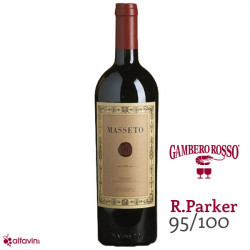
990.00 CHF
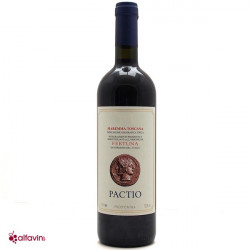
16.00 CHF
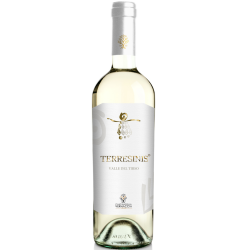
16.00 CHF
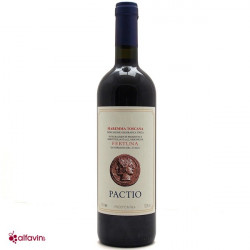
16.00 CHF
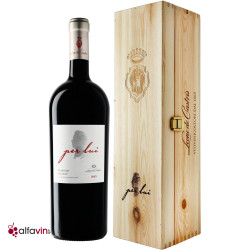
91.00 CHF












